Abstract
Procedures for quantitating the fecal microflora of man were described. Special attention was given to criteria for characterizing the culturable aerobic, Micro-aerophilic, and anaerobic bacteria. Three groups of healthy persons were studied: wholly breast—fed infants (2 to 4 month-olds), weanlings (1 to 2 year-olds), and adults. In breast-fed children, bifidobacteria predominate and outnumber by one or several logs all other culturable bacteria. The fecal flora of wholly breast-fed infants is “simpler” and more numerous [1011 to 1012 per g (wet weight) of feces than that of the adult 102 to 1011 per g]. In the adult, gram-negative anaerobic bacilli (bacteroides) outnumber all other groups by a factor of 1 log or more. Weanlings receiving an adult-type diet, but still breast-fed, showed a flora intermediate between that of the wholly breast-fed infant and that of the adult, but more similar to the latter. Anaerobes always constitute the predominant component of the culturable flora of children and adults and are always found in large numbers under conditions of health. The aerobes are significantly less numerous, and vary widely in their number and in the frequency with which they appear in feces.
Full text
PDF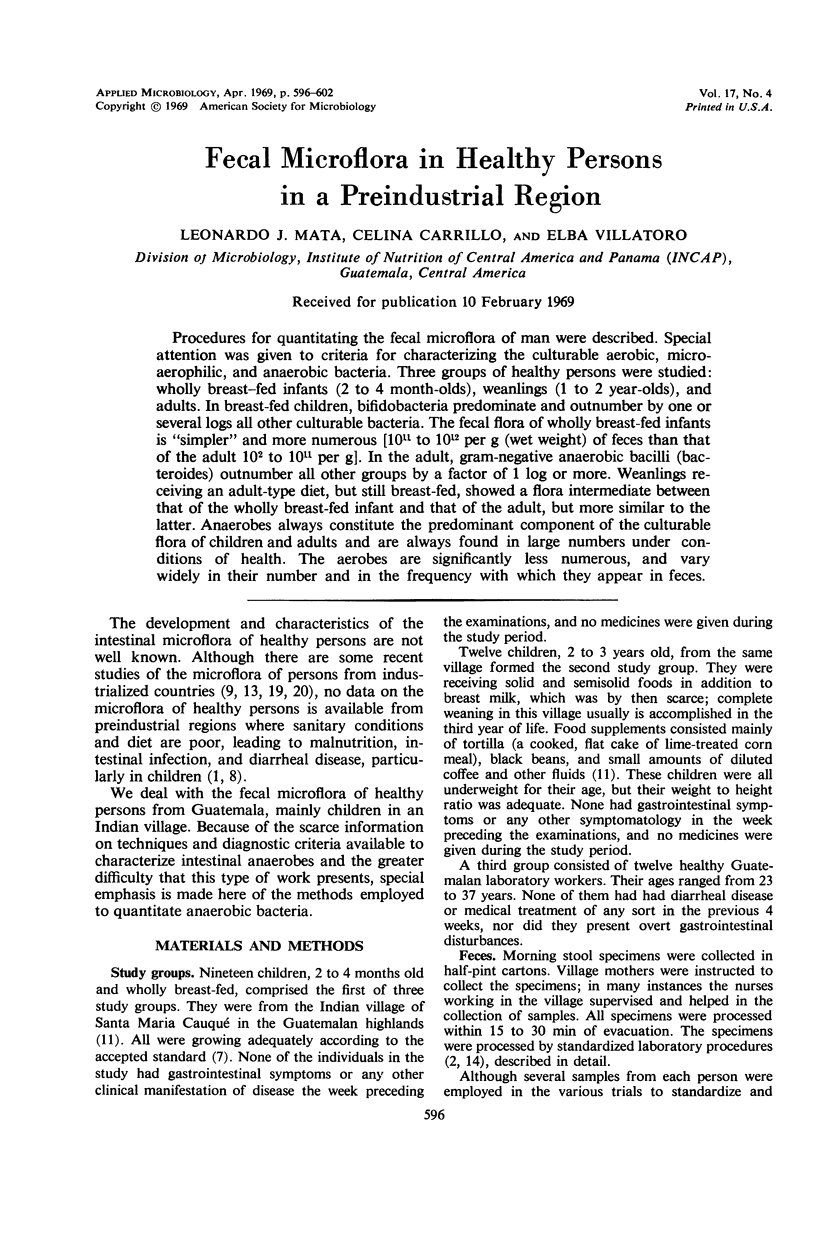
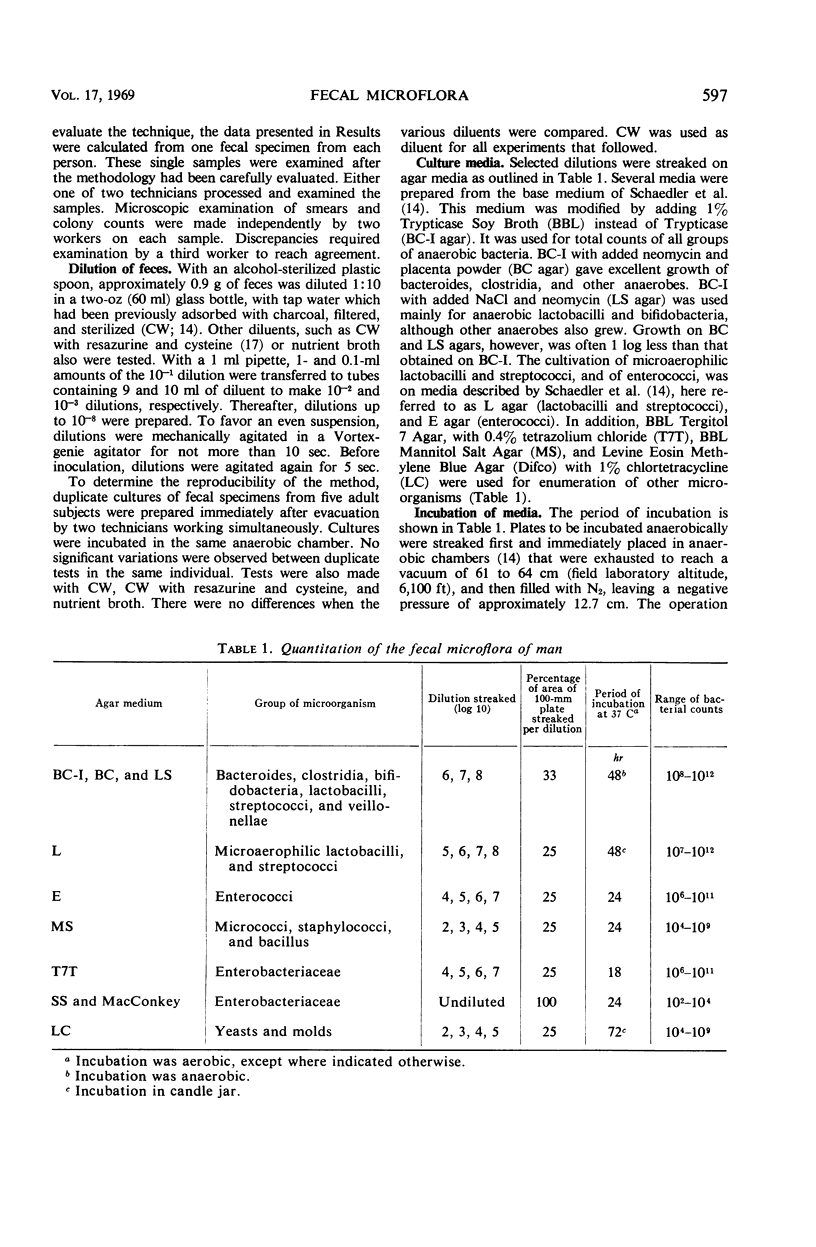
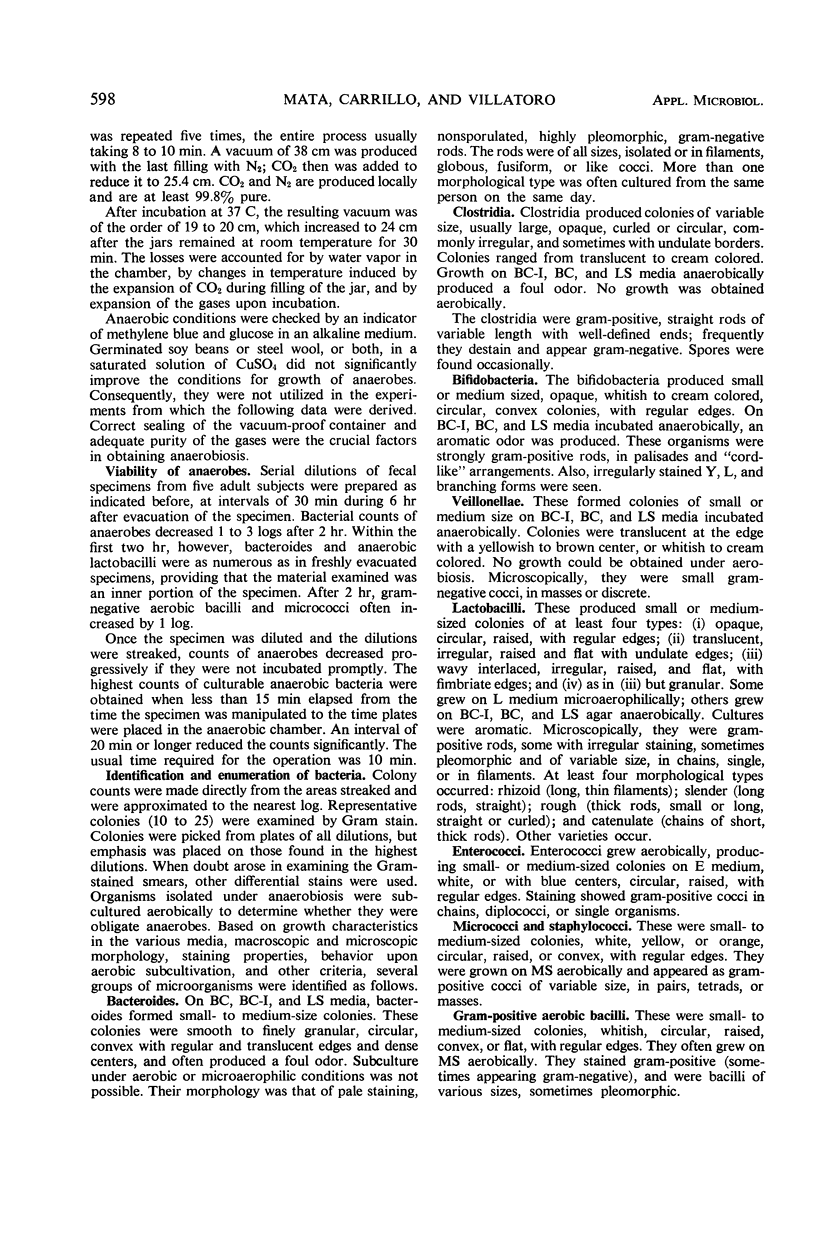
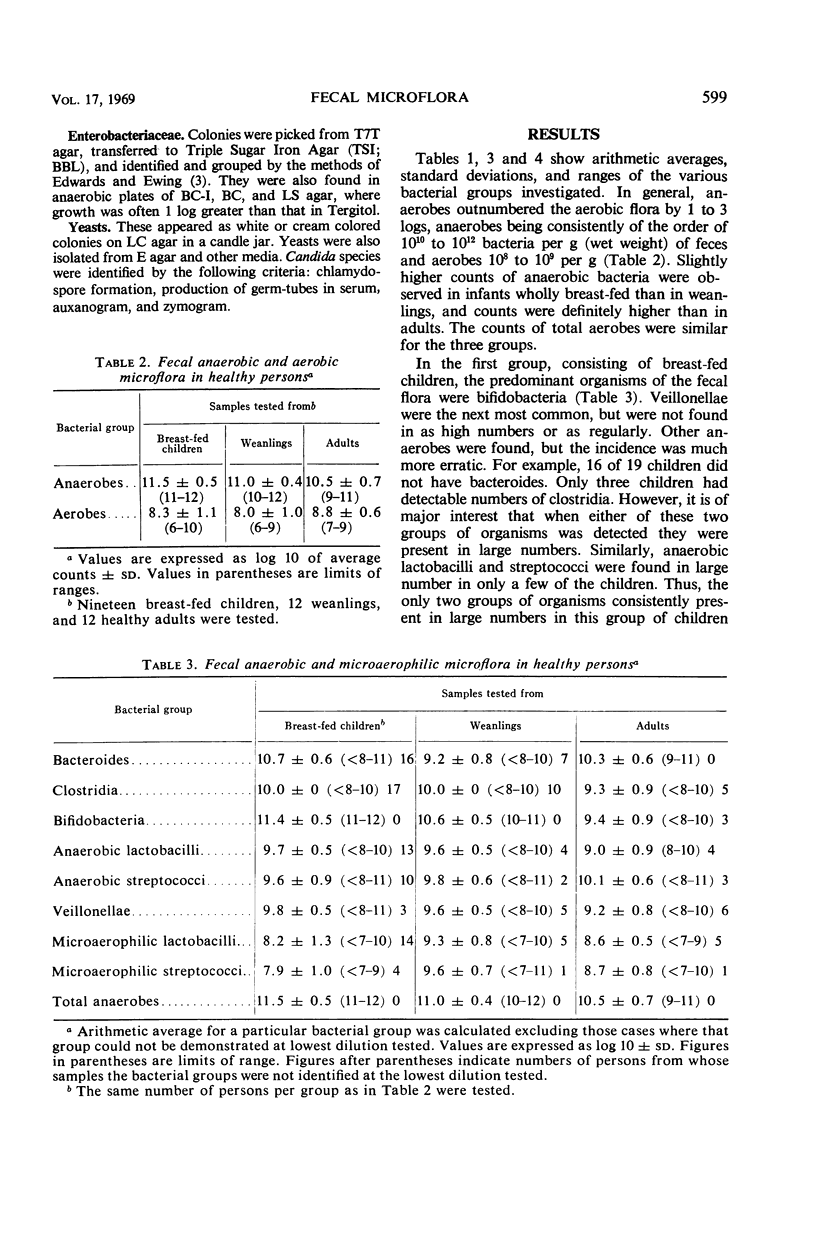
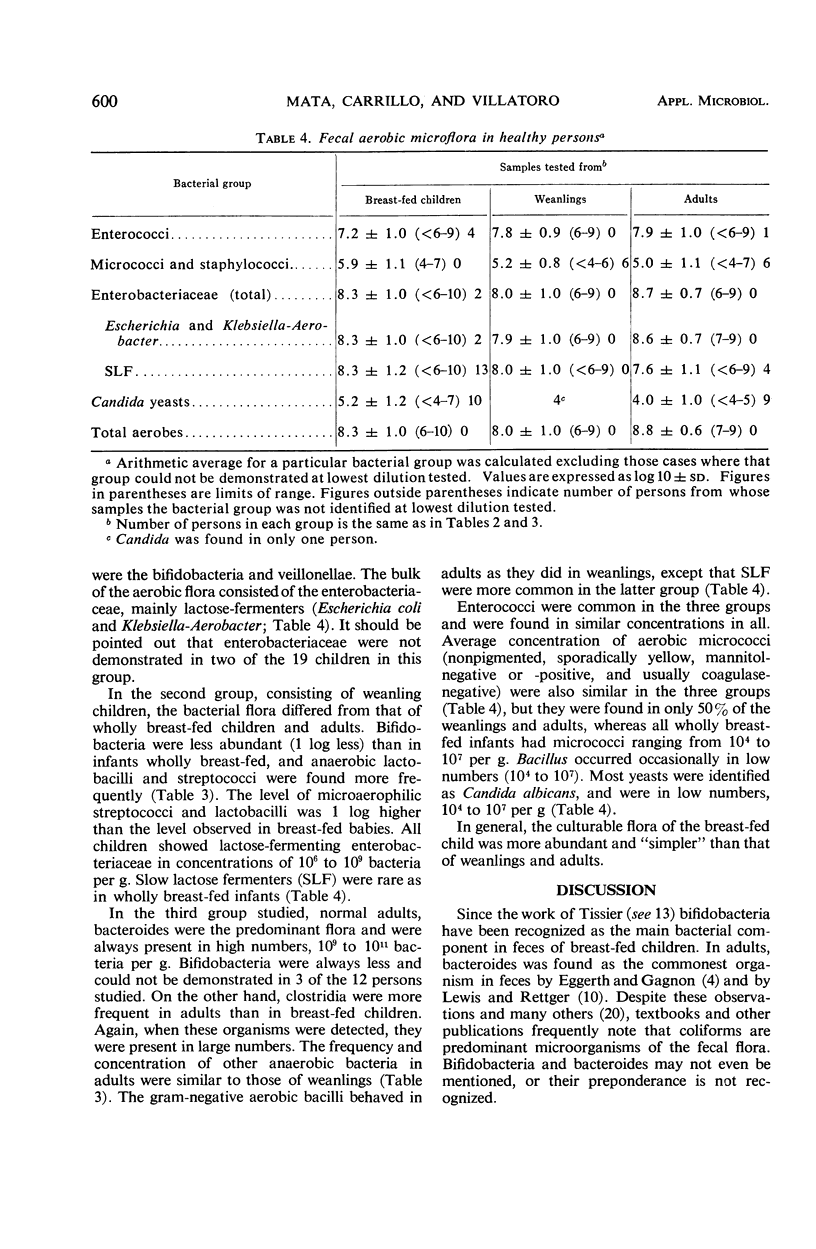
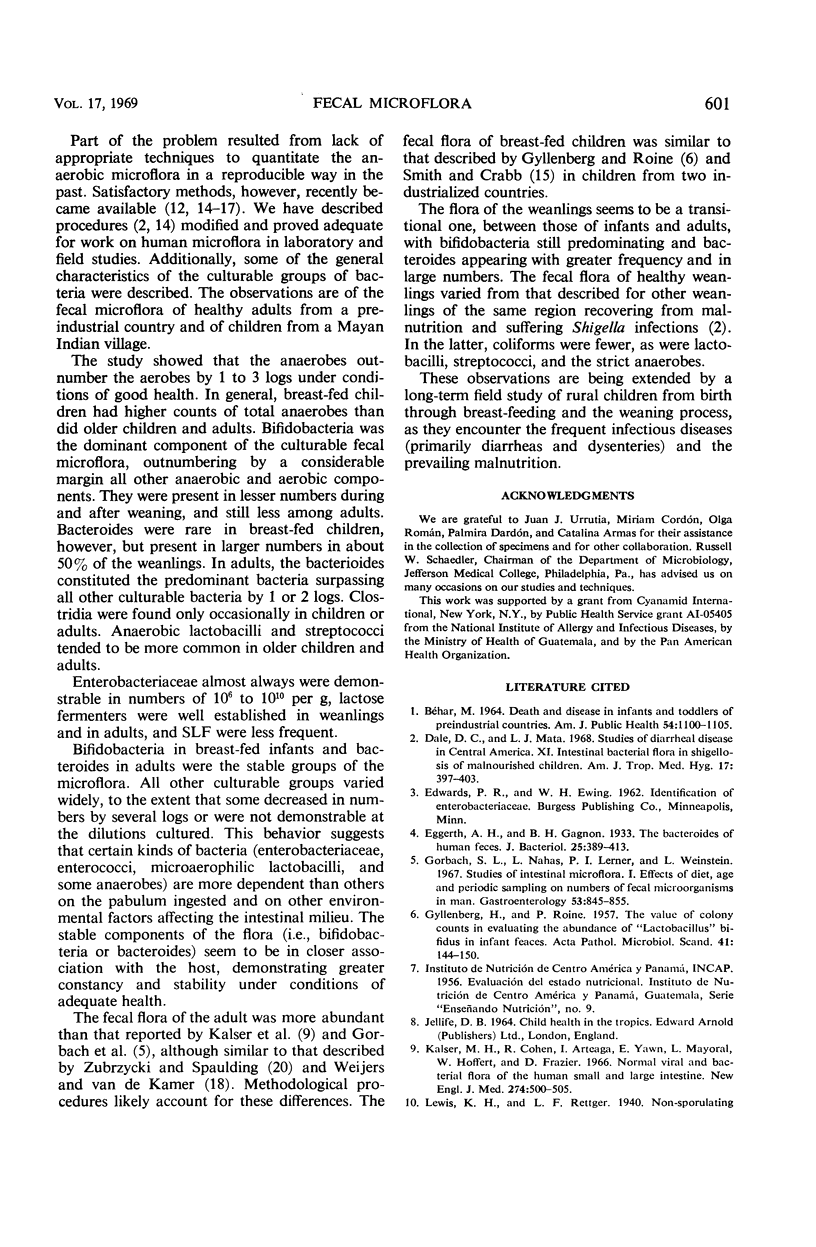
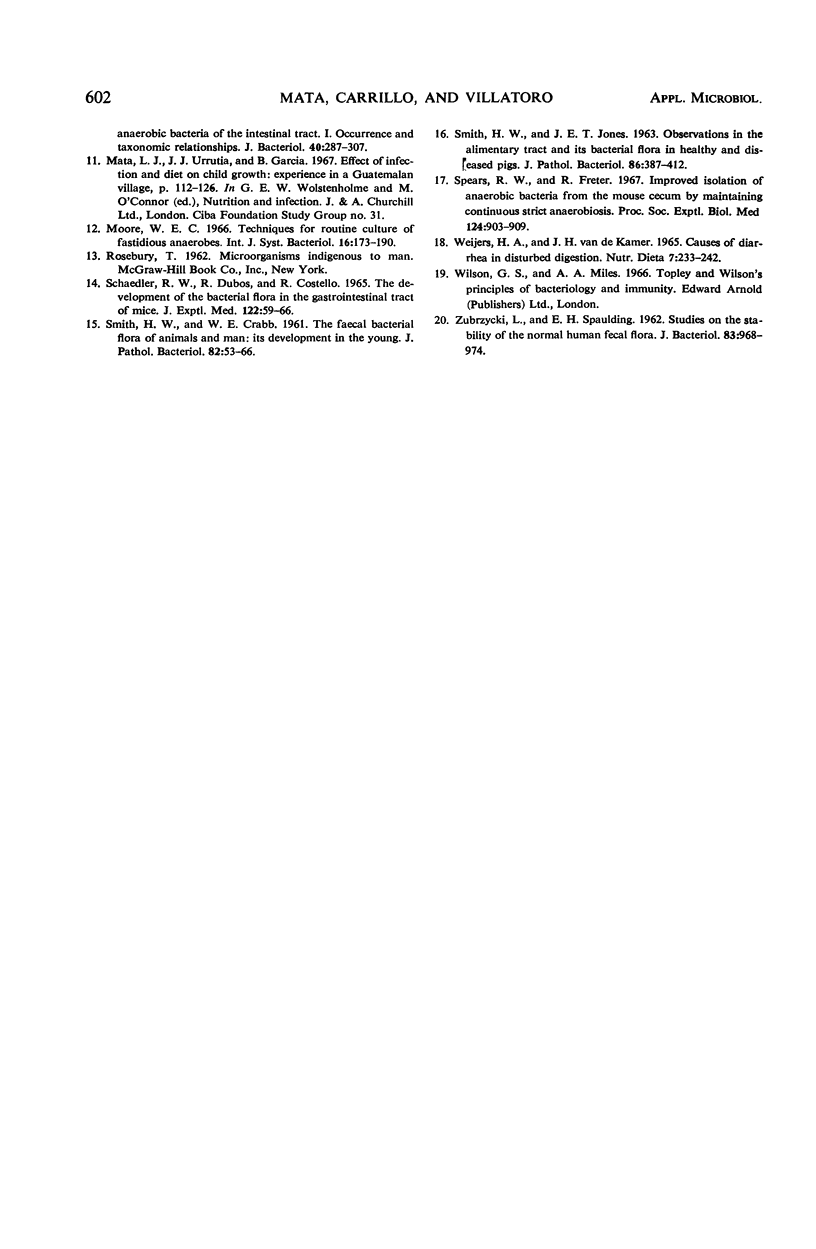
Selected References
These references are in PubMed. This may not be the complete list of references from this article.
- BEHAR M. DEATH AND DISEASE IN INFANTS AND TODDLERS OF PREINDUSTRIAL COUNTRIES. Am J Public Health Nations Health. 1964 Jul;54:1100–1105. doi: 10.2105/ajph.54.7.1100. [DOI] [PMC free article] [PubMed] [Google Scholar]
- Dale D. C., Mata L. J. Studies of diarrheal disease in Central America. XI. Intestinal bacterial flora in malnourished children with shigellosis. Am J Trop Med Hyg. 1968 May;17(3):397–403. doi: 10.4269/ajtmh.1968.17.397. [DOI] [PubMed] [Google Scholar]
- Eggerth A. H., Gagnon B. H. The Bacteroides of Human Feces. J Bacteriol. 1933 Apr;25(4):389–413. doi: 10.1128/jb.25.4.389-413.1933. [DOI] [PMC free article] [PubMed] [Google Scholar]
- GYLLENBERG H., ROINE P. The value of colony counts in evaluating the abundance of Lactobacillus bifidus in infant faeces. Acta Pathol Microbiol Scand. 1957;41(2):144–150. doi: 10.1111/j.1699-0463.1957.tb01010.x. [DOI] [PubMed] [Google Scholar]
- Gorbach S. L., Nahas L., Lerner P. I., Weinstein L. Studies of intestinal microflora. I. Effects of diet, age, and periodic sampling on numbers of fecal microorganisms in man. Gastroenterology. 1967 Dec;53(6):845–855. [PubMed] [Google Scholar]
- Kalser M. H., Cohen R., Arteaga I., Yawn E., Mayoral L., Hoffert W. R., Frazier D. Normal viral and bacterial flora of the human small and large intestine. N Engl J Med. 1966 Mar 3;274(9):500–contd. doi: 10.1056/NEJM196603032740907. [DOI] [PubMed] [Google Scholar]
- SCHAEDLER R. W., DUBOS R., COSTELLO R. THE DEVELOPMENT OF THE BACTERIAL FLORA IN THE GASTROINTESTINAL TRACT OF MICE. J Exp Med. 1965 Jul 1;122:59–66. doi: 10.1084/jem.122.1.59. [DOI] [PMC free article] [PubMed] [Google Scholar]
- SMITH H. W., JONES J. E. OBSERVATIONS ON THE ALIMENTARY TRACT AND ITS BACTERIAL FLORA IN HEALTHY AND DISEASED PIGS. J Pathol Bacteriol. 1963 Oct;86:387–412. [PubMed] [Google Scholar]
- Spears R. W., Freter R. Improved isolation of anaerobic bacteria from the mouse cecum by maintaining continuous strict anaerobiosis. Proc Soc Exp Biol Med. 1967 Mar;124(3):903–909. doi: 10.3181/00379727-124-31882. [DOI] [PubMed] [Google Scholar]
- Weijers H. A., van de Kamer J. H. Causes of diarrhoea in disturbed digestion. Bibl Nutr Dieta. 1965;7:233–242. doi: 10.1159/000385055. [DOI] [PubMed] [Google Scholar]
- Zubrzycki L., Spaulding E. H. STUDIES ON THE STABILITY OF THE NORMAL HUMAN FECAL FLORA. J Bacteriol. 1962 May;83(5):968–974. doi: 10.1128/jb.83.5.968-974.1962. [DOI] [PMC free article] [PubMed] [Google Scholar]


